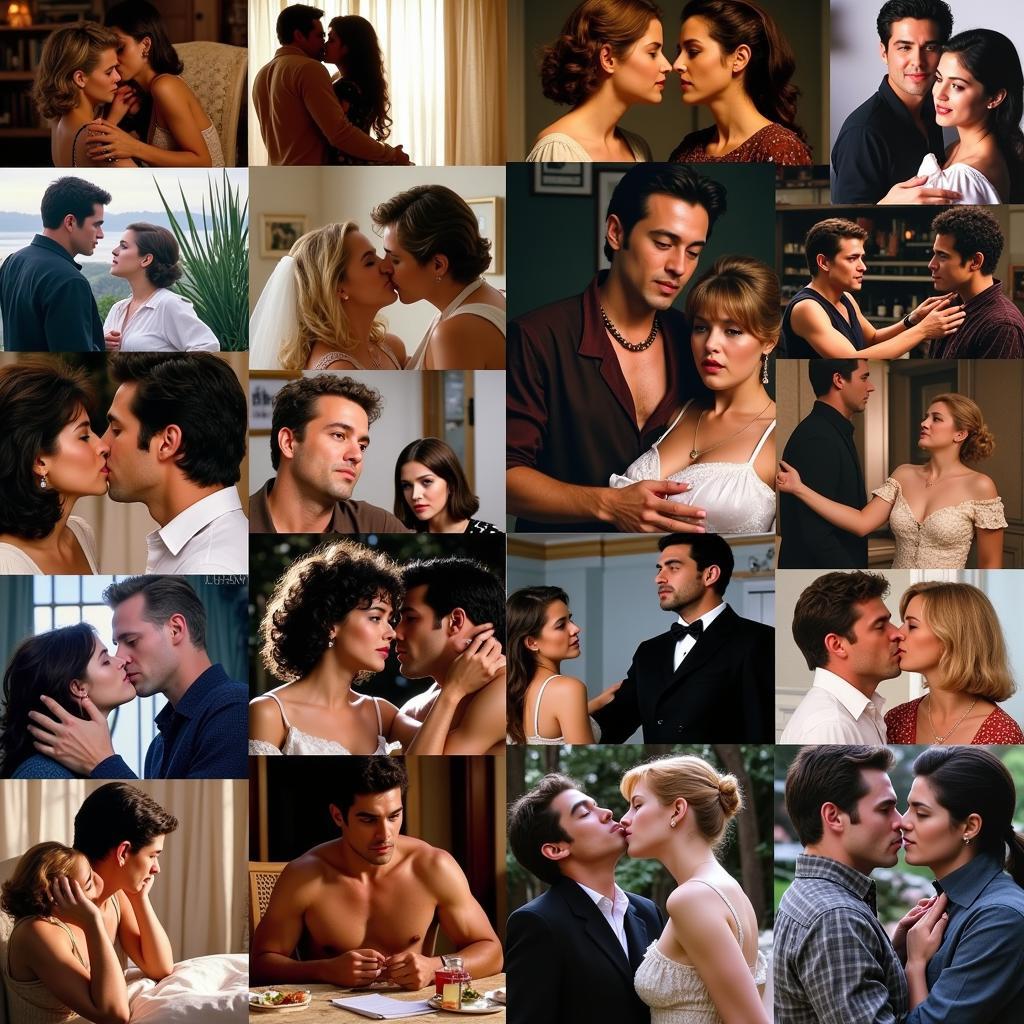The portrayal of blood, sex, and violence in movies has always been a subject of debate and fascination. This article delves into the multifaceted aspects of these themes, exploring their historical context, psychological impact, and artistic significance. We’ll examine how these elements have evolved in cinema, from early exploitation films to contemporary narratives.
The Evolution of Blood and Gore in Cinema
From the early days of black and white horror films to the hyper-realistic gore of modern cinema, the depiction of blood has undergone a dramatic transformation. Initially, limitations in special effects and censorship often resulted in suggestive rather than explicit depictions of violence. However, as technology advanced, filmmakers gained the ability to portray blood and gore with increasing realism, pushing the boundaries of what was considered acceptable.
One key turning point was the emergence of the slasher genre in the 1970s and 80s. Films like “Halloween” and “Friday the 13th” popularized graphic violence, leading to both critical acclaim and public outcry. This era also saw the rise of practical effects, allowing filmmakers to create visceral and shocking scenes of bloodshed.
Sex and Sensuality on the Silver Screen
The portrayal of sex in film has been just as controversial, reflecting changing societal attitudes and moral values. Early cinema was heavily censored, with even implied sexuality considered taboo. As censorship relaxed, filmmakers began exploring themes of intimacy and desire with greater freedom, leading to landmark films that challenged conventional norms.
The 1960s and 70s saw a significant shift in cinematic portrayals of sex, with films like “Last Tango in Paris” and “Midnight Cowboy” pushing boundaries and sparking heated debates. These films explored complex themes of sexuality and challenged traditional notions of romance and relationships.
 Sex and Sensuality in Cinema
Sex and Sensuality in Cinema
The Psychology of Violence and Sexuality in Film
Why are we drawn to depictions of blood, sex, and violence in film? From a psychological perspective, several theories attempt to explain this fascination. Some argue that it allows for a safe exploration of taboo subjects, providing a cathartic release for repressed emotions. Others suggest that it taps into our primal instincts, triggering a physiological response that heightens our sense of excitement and engagement.
The impact of these themes can vary significantly depending on individual factors such as age, gender, and cultural background. While some viewers may find these depictions disturbing or offensive, others may find them thrilling or even aesthetically pleasing. Understanding the psychological impact of these elements is crucial for both filmmakers and audiences.
“The human fascination with violence and sex in art is a complex interplay of psychological factors, cultural influences, and individual experiences,” says Dr. Emily Carter, a renowned film scholar and psychologist. “It’s important to approach these themes with critical awareness, considering both their potential harms and their artistic value.”
Finding the Balance: Responsible Representation of Sensitive Themes
The responsible depiction of blood, sex, and violence in film requires careful consideration of context, artistic intent, and potential impact on viewers. Filmmakers have a responsibility to avoid gratuitous violence and exploitation, striving instead to use these elements in a way that contributes to the narrative and enhances the overall cinematic experience. “Filmmakers need to be mindful of the power of these images and strive for a balance between artistic expression and responsible storytelling,” adds Dr. Carter. “The goal should be to engage viewers intellectually and emotionally, not simply to shock or titillate.”
Conclusion
The portrayal of blood, sex, and violence in movies is a complex and ever-evolving subject. Understanding the historical context, psychological impact, and artistic significance of these themes allows us to appreciate the multifaceted role they play in cinema. By engaging with these topics thoughtfully and critically, we can foster a more informed and nuanced understanding of the power and influence of film.
FAQs
- What is the impact of violent films on viewers? The impact varies depending on individual factors. Some viewers may be desensitized, while others may experience increased anxiety or fear.
- How has the portrayal of sex changed in cinema over time? It has evolved from heavily censored depictions to more explicit portrayals, reflecting changing social norms.
- Why are some films rated R or NC-17? These ratings indicate content that may be unsuitable for younger viewers due to violence, sexual content, or other mature themes.
- Where can I find more information about film analysis and criticism? Numerous online resources, academic journals, and film studies programs offer in-depth analysis and critical perspectives on cinema.
- How can I watch movies responsibly and critically? Be mindful of the content and its potential impact, and engage with the film’s themes and messages thoughtfully.
- What is the role of censorship in regulating film content? Censorship aims to protect viewers from potentially harmful content, but it can also stifle artistic expression.
- How do filmmakers use blood, sex, and violence to enhance storytelling? These elements can be used to create suspense, build character development, explore complex themes, and elicit emotional responses.
Need support? Contact us at Phone Number: 02933444567, Email: [email protected] or visit us at RF55+W7R, Lê Hồng Phong, Vị Tân, Vị Thanh, Hậu Giang, Vietnam. We have a 24/7 customer service team.
